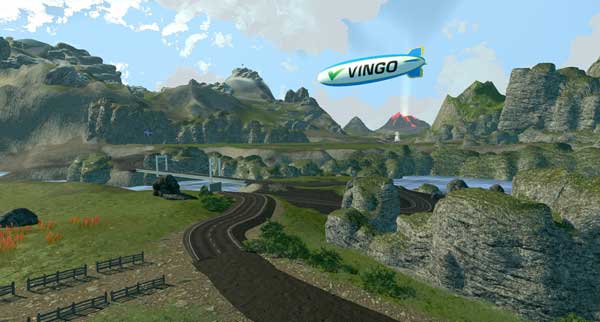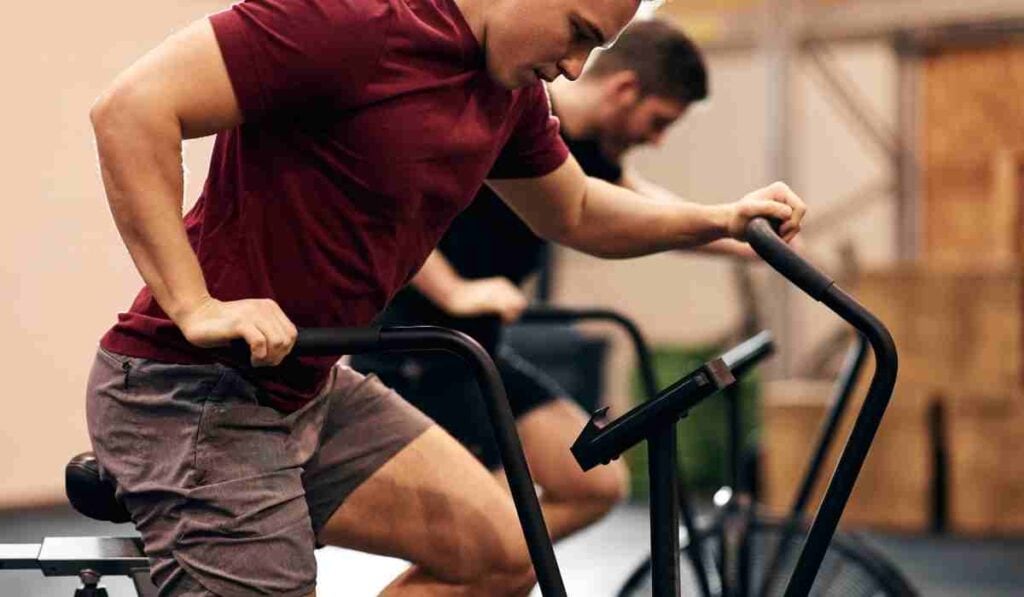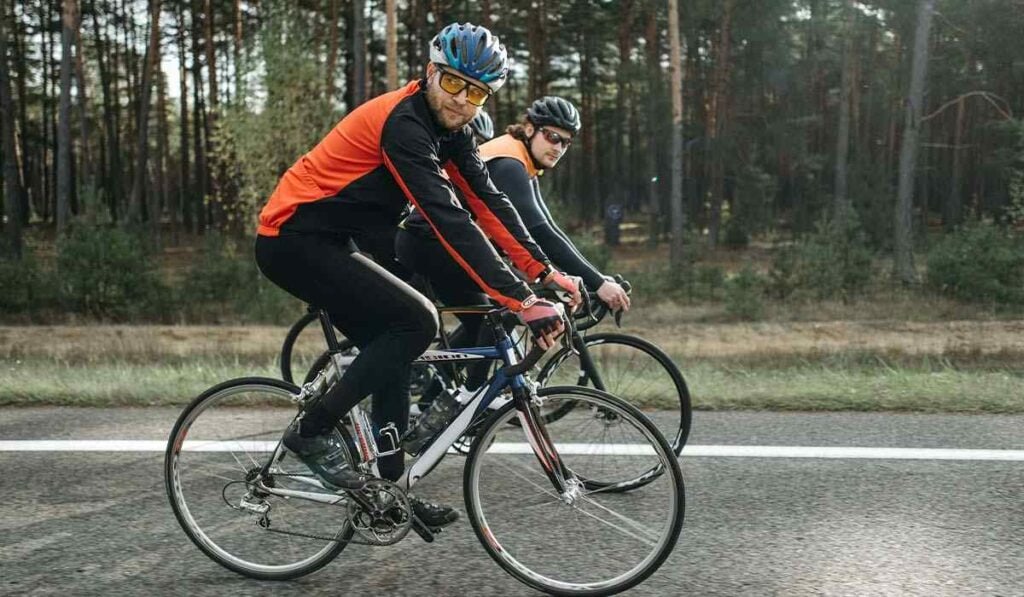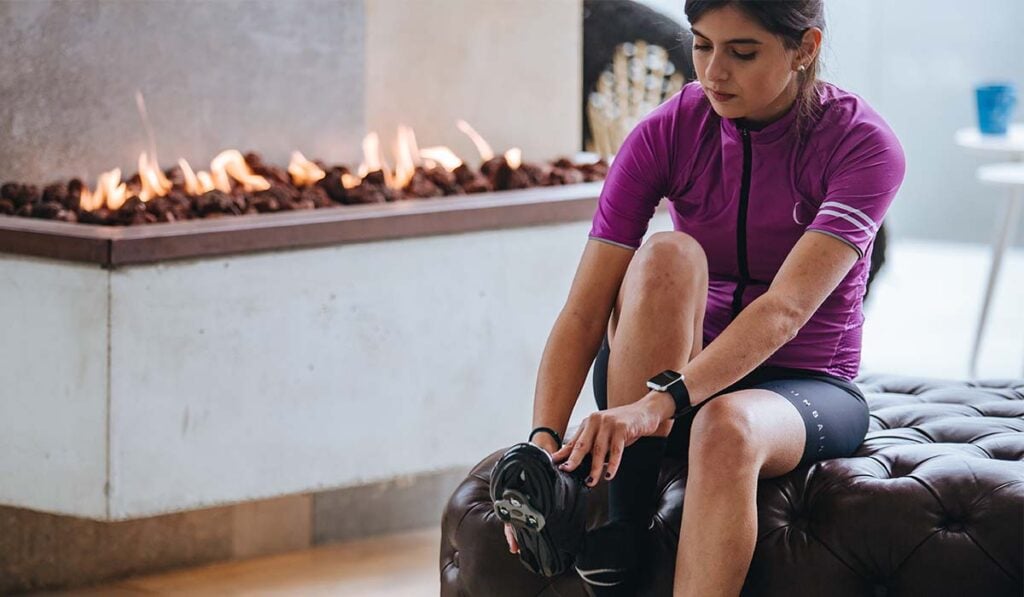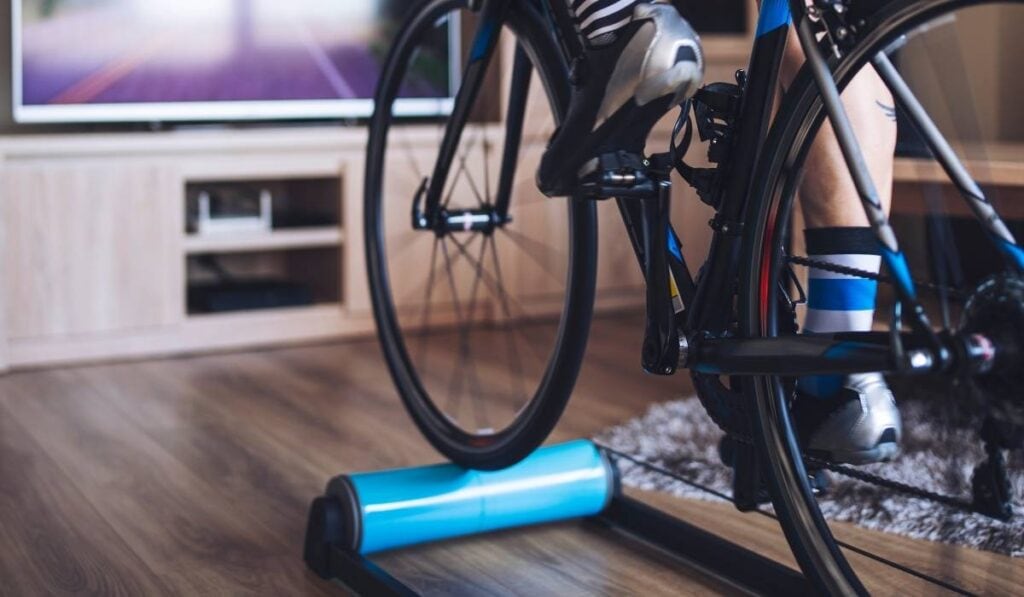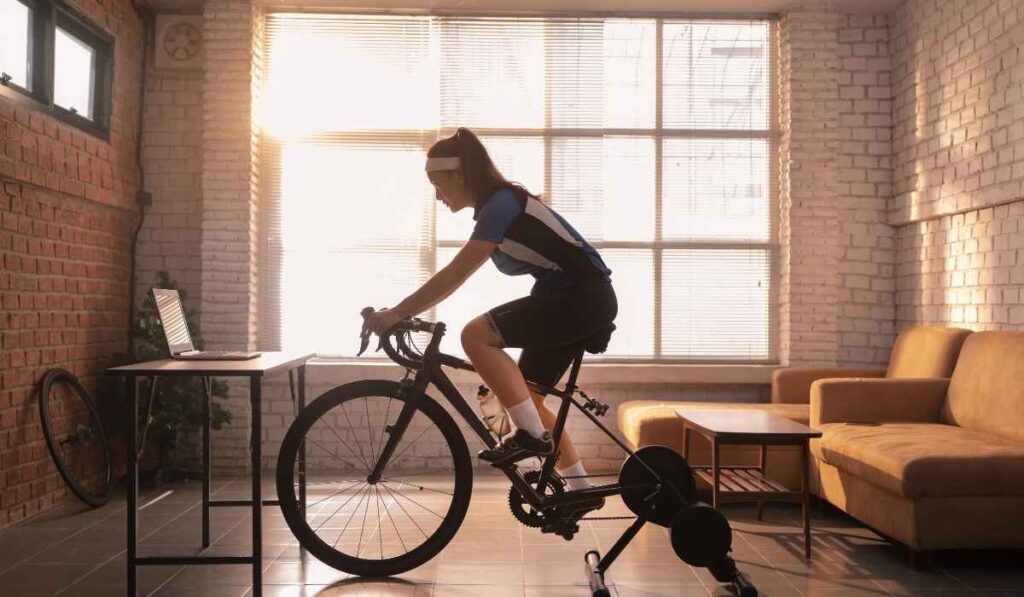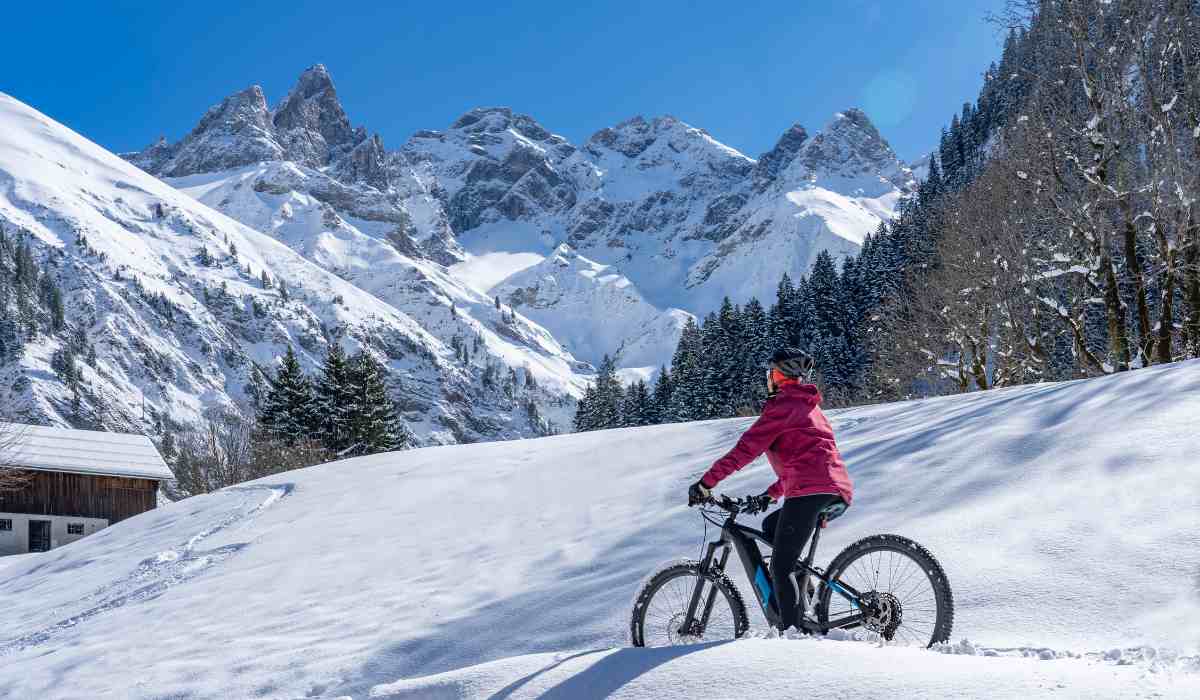
12 Tips to Improve Your Winter Cycling Experience
- 1. Dress for the weather.
- 2. Don’t forget to hydrate.
- 3. Install fenders on your bike.
- 4. Check your tire pressure before every ride.
- 5. Try not to overindulge.
- 6. Bring the right snacks.
- 7. Don’t assume your regular route is best.
- 8. Maintain your bike.
- 9. Don’t bike too hard or too fast.
- 10. Rest when you’re sick.
- 11. Prepare your bike for winter cycling.
- 12. Cycle indoors.
- Tired of hypercompetitive fitness apps?
For many cyclists, winter is the most challenging time of the year to bike. Bad weather can make outdoor rides impossible, it’s darker outside, making it hard to get motivated, and cold hands and feet while cycling are just plain miserable.
Fortunately, you can prevent many of these common issues! To help you maintain your cycling routine this winter and prevent common mistakes, let’s look at some of the best winter cycling tips.
12 Essential winter cycling tips
1. Dress for the weather.

Winter cycling can get downright cold. And the last thing you want is to get blasted with an unexpected rain or snowstorm while cycling. It will only get colder and wetter with miles to go before you get home. Bike rides definitely won’t be enjoyable if you don’t dress appropriately, and you could lose your motivation to train during the winter months entirely.
You might wonder, “How do I dress for winter cycling?” Well, here’s what you need to know: Wear layers while cycling in cold weather. The bottom layer should be breathable and wick moisture away from your body. On top of that, wear a waterproof thermal layer to protect yourself from moisture and cold.
Your hands and feet are also likely to get cold, so wear gloves and thick socks while biking in winter. Warm bib tights or waterproof winter cycling pants are preferable on the bottom. The pros recommend also always preparing for sudden weather changes by carrying an extra layer with you, like a waterproof and windproof jacket.
2. Don’t forget to hydrate.

Drinking plenty of water feels like second nature when cycling during the summer. Since it’s warmer, you get hot and thirsty very quickly. In the winter, however, it’s not as easy to remember to drink water. The weather is colder, and although you still sweat, you don’t feel as thirsty!
Set a vibrating reminder on your smartwatch or phone so you remember to stop and grab a swig of water when it vibrates. (Or drink it as you cycle if you’re coordinated enough.) Also, if you’re not doing this already, consider adding some electrolytes to your water to make staying hydrated easier.
3. Install fenders on your bike.

Absolutely no one enjoys having mud spray up into their face or all over their backside while cycling. But if you’re biking in winter, there will be more opportunities for this to happen. Whether it rains, snows, or sleets, the weather conditions can make it difficult to avoid puddles and wet areas.
To prevent this while winter cycling, install fenders on the front and back of your bike. Clip-on fenders are ideal because they’re easy to remove if they ever get clogged with ice or snow while you’re out riding.
4. Check your tire pressure before every ride.

Bike tires lose pressure over time, and colder temperatures can also reduce air pressure. Although it’s annoying, it’s important to check and adjust your bike tire pressure before every ride. Maintaining the proper tire pressure will reduce your risk of falling and injuring yourself while cycling in the winter.
If the pressure in your tires is low, don’t fully inflate them. Slightly deflated tires will grip the road better, making your bike more stable during winter rides. When you ride fast, your bike tires also lose traction, so keeping them slightly deflated will help reduce your risk of slipping and falling.
5. Try not to overindulge.

Winter is the time of year when many cyclists pack on the pounds. Why? Because the holiday season is a tempting opportunity to overindulge and enjoy a few too many rich, high-calorie foods. The increase in calories and weight gain is hard to avoid, but if you’re not careful, it can impact your cycling performance and overall fitness, making it harder to reach your goals.
Instead, enjoy yourself and the holiday treats, but set limits for yourself. Motivate yourself to keep biking in winter by trying a new type of cycling, joining a club, or using Vingo to cycle indoors if that’s more comfortable than biking outside in the cold. Once the warm weather rolls back around, you’ll thank yourself for keeping your fitness and weight in check.
6. Bring the right snacks.

With winter cycling, you also have to adjust your nutrition regimen. For example, a dense energy bar will get hard during a winter bike ride—almost too hard to eat! Even if you typically don’t need a snack when cycling, you might desperately need fuel at some point during your ride because your body uses more energy to bike in the cold. Plus, the longer you ride, the more difficult it becomes to choose the right snacks to fuel your workout.
Be selective about the snacks you pack for your winter rides. Things like energy gels or chews, soft bread (think banana bread), or sandwiches are great options. These types of snacks will provide steady energy, and they won’t freeze during a long ride. Another tip: any food you bring along with you will stay warmer if stored closer to your body, like in your pocket.
7. Don’t assume your regular route is best.

If you’re a creature of habit, you might automatically head to the same trails you ride during the summer, spring, or fall. But optimal warm-weather biking routes aren’t necessarily the best winter routes. Certain terrain can become treacherous when coated with a layer of snow or ice, and the conditions of rugged, off-road trails can be difficult to anticipate.
When biking in winter, choose your route wisely with these steps:
- Do your research to identify local bike paths that are regularly maintained, especially during the winter.
- Avoid road biking and hard surfaces when everything is iced over (unless you have ice tires).
- Pay attention to the amount of sunlight and shade on any route you’re considering biking.
- If you can, avoid biking early in the morning or late at night, when it’s bound to be coldest, darkest, and most icy.
8. Maintain your bike.

It’s easy to neglect your bike, especially if you’re cramming your biking sessions into an already busy and full schedule. However, neglecting regular bike care can contribute to unexpected breakdowns or expensive repairs.
In a perfect world, you would thoroughly clean your entire bike regularly, but we know there’s not always time for that. At a minimum, it’s best to wipe and clean your chain after an outdoor ride through the snow or rain. Otherwise, it will get rusty from all the moisture.
9. Don’t bike too hard or too fast.

“Why is biking so hard in the winter?” Many avid cyclists have asked themselves this question. It’s because the air density is thicker, which creates more resistance. Your tires also roll slower in the cold, and your muscles must work harder to combat the cold. As a result, you might feel like you need to push extra hard to bike faster while winter cycling, but doing so will most likely backfire. Pushing yourself too hard will cause more sweat buildup in your clothes, and you’ll feel chilled to the bone the entire ride!
Winter is the perfect time to prioritize endurance over speed. Slow your pace and try to control how much energy you exert. You’ll still reap the benefits of cycling regularly, and you can always focus on speed when the weather warms up or when you cycle indoors.
10. Rest when you’re sick.

Fall and winter are cold and flu seasons, traditionally the worst time for sickness. If you have a runny nose or a sore throat (and you’ve already tested for COVID and gotten a negative result), you’re most likely okay to cycle. However, biking in winter with chest congestion, a fever, severe cough, or nausea isn’t a good idea.
If you’re really sick, skip your next ride and take some time off to recover before jumping back on the bike, especially outdoors. Cycling while you’re sick could worsen your symptoms and prolong your recovery.
11. Prepare your bike for winter cycling.

Some people would never consider riding a bike in the winter, while others may wonder why you wouldn’t. The truth is: it’s possible to enjoy a bike ride, even on a cold and windy winter day. But if you don’t winterize your bike, you’re more likely to slip and fall or damage your bike in the process.
If you’re thinking, “Okay, then, how do I winterproof my bicycle?” the answer is more straightforward than you might think.
- First, install clip-on fenders on your bike to stay as dry as possible.
- Then, add a set of battery-operated lights to your bike. Anywhere from 30 to 1,000 lumens is best for winter riding. Just make sure to bring them indoors with you when you’re done riding.
- And finally, wax your frame and other bike components to protect them from moisture, debris, and corrosion.
12. Cycle indoors.

Cycling in the winter can be extremely uncomfortable, unpredictable, or just plain dangerous if you’re not careful. Fortunately, you don’t have to be a hero. Sometimes the weather conditions are just too poor for an outdoor ride and there’s no need to force it.
If the weather isn’t cooperating or you’re just not feeling it, bike indoors instead. Apps like Vingo make indoor biking easy and fun, even if you don’t have a ton of gear or equipment. All you need to get started with Vingo is an indoor trainer and the app.


